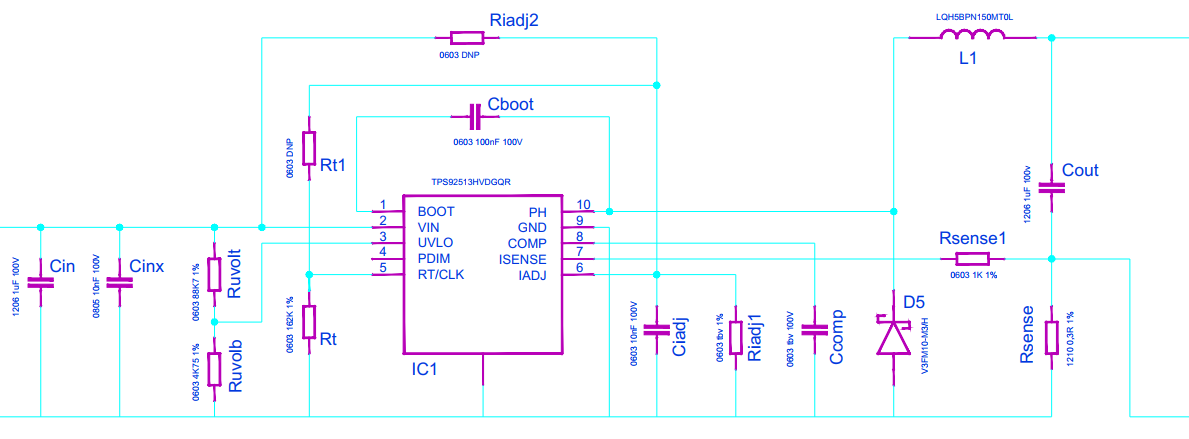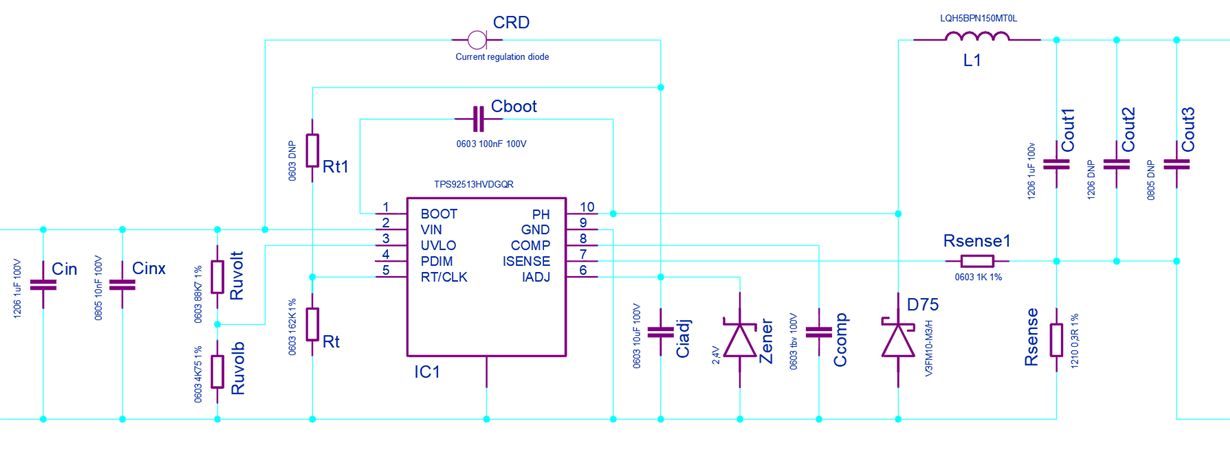Other Parts Discussed in Thread: TPS92515, TPS92513
Hello,
We would like to use the TPS92513HV driver with a soft start function (for example 300-500ms).
I cannot find anything about soft start in the datasheet. Is there a way to use the PDIM of IADJ input to achieve this behavior?
Thanks in advance, Cees



